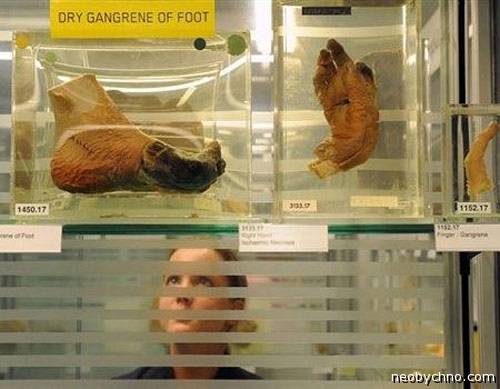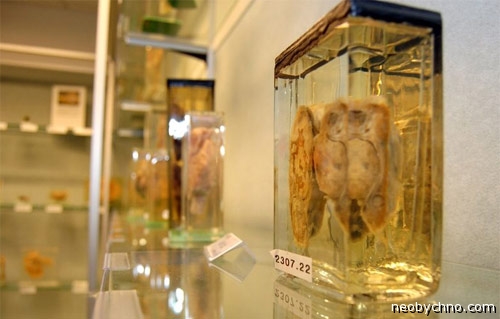The most pathological museums in the world
The craving of humanoids for beauty is clear to everyone without explanation. The craving for the ugly in most societies and their cultures has to be argued. I remember the Soviet, excuse me, times. During the summer, schoolchildren were asked to read sagas about Major Deev or merchant Kalashnikov, but boys and girls had no interest in such reading. In the absence of porn magazines and any albums with reproductions of Boris Vallejo, textbooks on forensic medicine were especially popular among the commoners of the young tribe. I saw a terrible thing distorted in letterpress, read a couple of lines about maceration and fat wax - I provided myself with thoroughbred nightmares for a couple of months.
Even the ancient pre-Internet Soviet times were marked by two amazing “necrophilic” queues in the two capitals of Mother: the queue glorified by Letov and an almost massacre stampede for the right to an entrance ticket to the St. Petersburg Kunstkamera - to gaze at anencephals in jars and a six-legged calf.
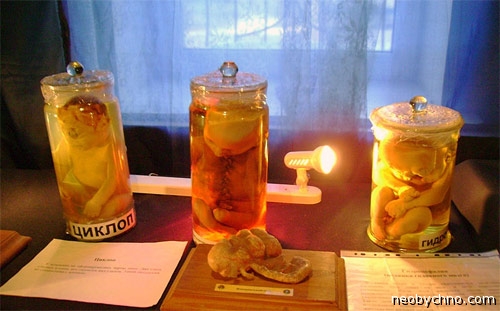
After Chernobyl with its eight-armed apples and horse-stealing catfish, everyone was given everything. Along with the dollar, visual information about the forbidden came into the lives of the curious. Horror films, TV reports in the style of “Top Secret” and all that. At the same time, many secondary cabinets of curiosities fell into disrepair. And the main queue has thinned out. Horror entered everyday life, like an adrenaline needle into the vein of a dying man. At the same time, foreign countries have become closer. The lovers met their finest hour.
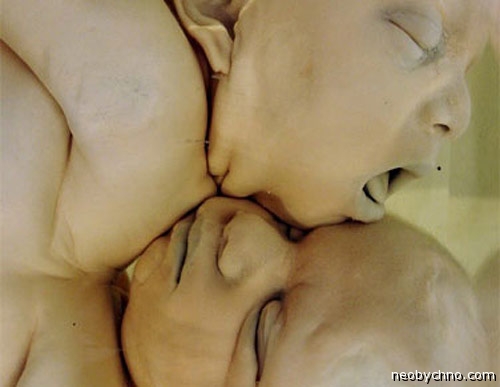
Jokes about pathologists and sausage exist in all cultures. Museums with biological horrors, opened abroad, are maintained in perfect condition and attract thousands of tourists. They are possessed by the same curiosity that brought their great-great-grandfathers to paid fair performances and. And neither horror films, nor porn, nor trash can satisfy this curiosity.

In short, here’s a short tour of the most “trash” cabinets of curiosities in the Western and Eastern worlds. If you're visiting, don't disdain anyone who's interested.
1. Fun museum Museum Vrolik (Amsterdam, Netherlands)
Among desperate people who are carried away by brain waves to the Netherlands, there is such a fun thing - when in Amsterdam, blow and go to the museum of freaks “Museum Vrolik”.
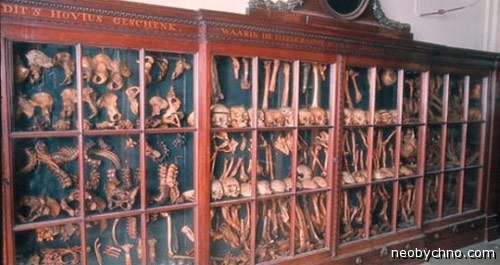
The word frolik can be translated from the English-Dutch surzhik as “perky” or “playful”. In fact, the museum of curiosities owes its name to its founders - father and son Gerardus and Willem Frolik, who lived 200 years ago. Currently, the exhibition of this cabinet of curiosities is located at the University of Amsterdam. The Frolikov Museum is considered the richest collection of human freaks in the world. This is about 10 thousand exhibits - infant Cyclops, Siamese twins and the like. As well as animal skeletons, stuffed animals of incredible mutants from the world of fauna, many of which are very old. The museum is regularly updated.
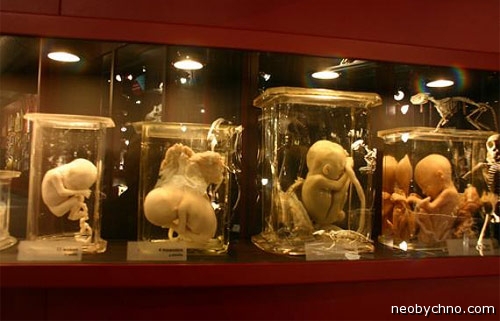
The so-called Hovius cabinet is considered an attraction of the museum. This is a collection of skulls and bones with various defects collected in the 18th century, which owes its existence to Dr. Jacob Hovius, who practiced in Amsterdam.
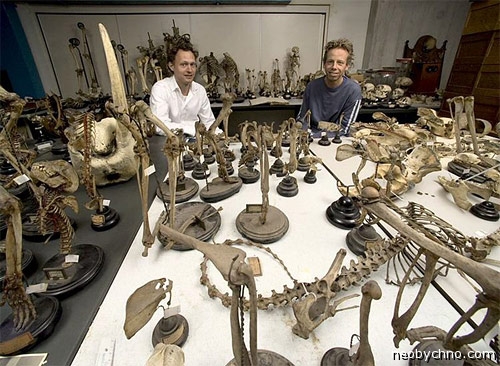
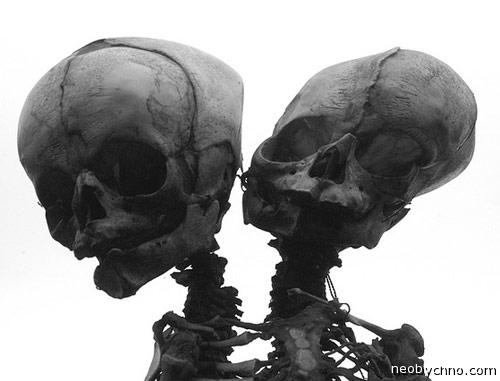

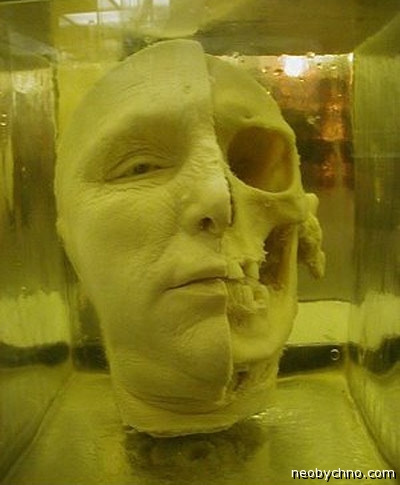
The mentioned tapeworm, almost 9 meters long, was extracted from the intestines of a Japanese man who had an unsuccessful dinner with trout. Next to the exhibit is a rope the length of a worm, which visitors can play with to get an idea of the extent of the pathology.

In total, Meguro contains 45 thousand nasty things, models and photographs.
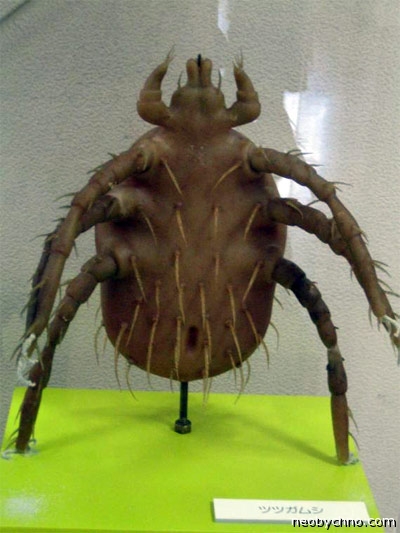
3. Cesare Lombroso Museum of Criminal Anthropology (Turin, Italy)
Criminologist Cesare Lombroso came up with the theory of the born criminal. He believed that the tendency to commit crimes lies in human biology. Dr. Lombroso taught to identify swindlers and murderers by the structural features of the skull and other appearance features. Thus, the patient’s low sloping forehead, wide jaws, high cheekbones, patchy facial hair, and long arms could indicate criminal tendencies. While working on his theories, Lombroso collected a large collection of anatomical preparations and criminological artifacts. The museum was opened to the public in 1884 and then toured Italy. Today the collection of Cesare Lombroso is exhibited in the Turin Museum.
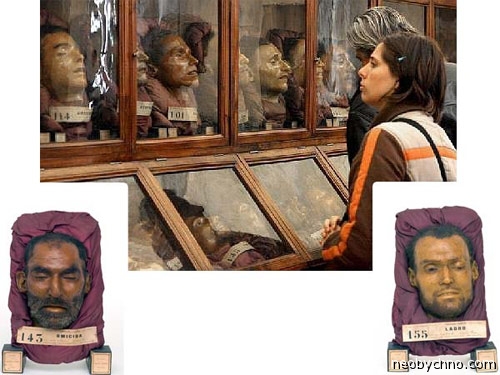
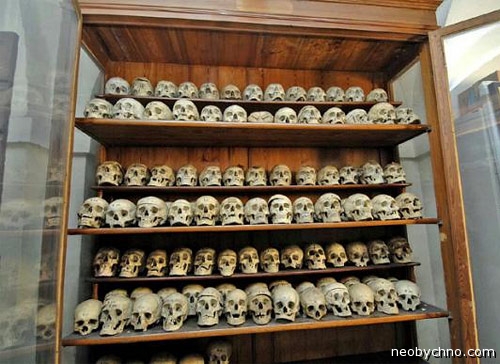
The collection of the Museum of Criminal Anthropology is crowned with the head of Cesare Lombroso himself.
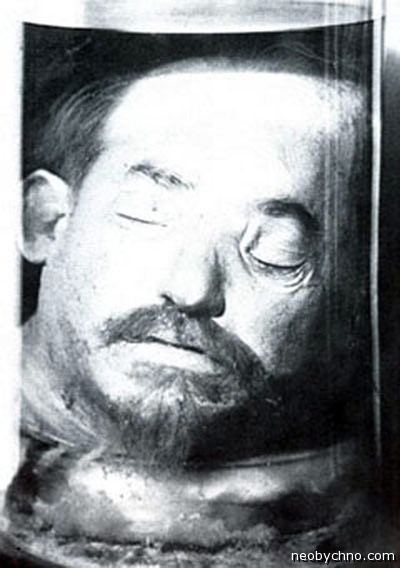
4. Anatomical Museum of Sirirai Hospital (Bangkok, Thailand)


The most popular among visitors to the museum at Siriraj Hospital is the mummy of Thailand's first serial killer, the cannibal Si Wei Sai Urng, who during his lifetime, in the 1950s, hunted children.
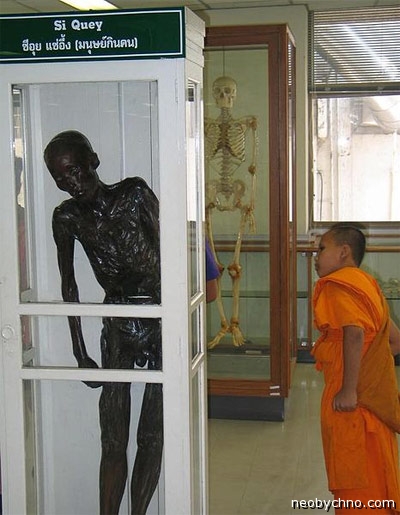
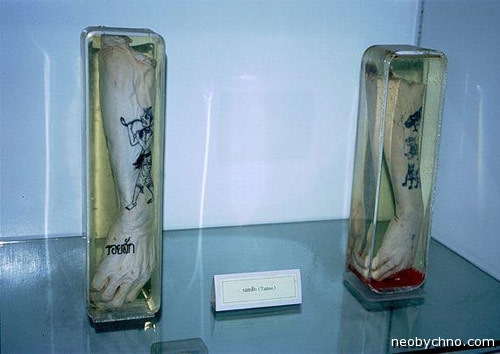
5. Museum of Human Disease (Sydney, Australia)
This museum was founded in the mid-1960s by Professor Donald Wilhelm for students and doctors. The remaining categories of the population were allowed entry only in 2009. The museum contains approximately 2,700 samples of diseased human tissue - from skin flaps to hearts and lungs.
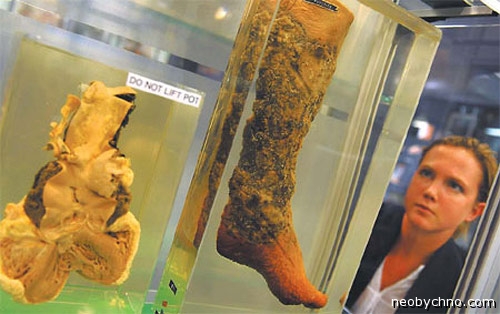
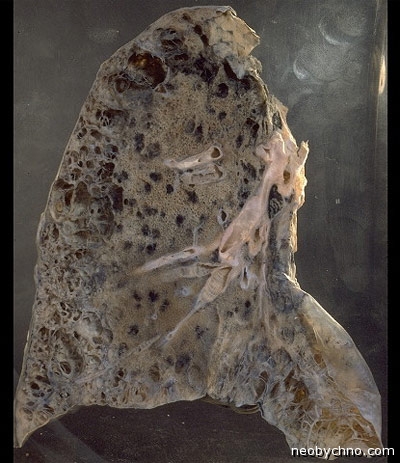
All unpleasant exhibits float in formaldehyde. Each of them is accompanied by a “pedigree” - a history of the disease that affected one or another organ. Some specimens of pathologies are not found anywhere else in preserved form, which Australian doctors are very pleased with.
